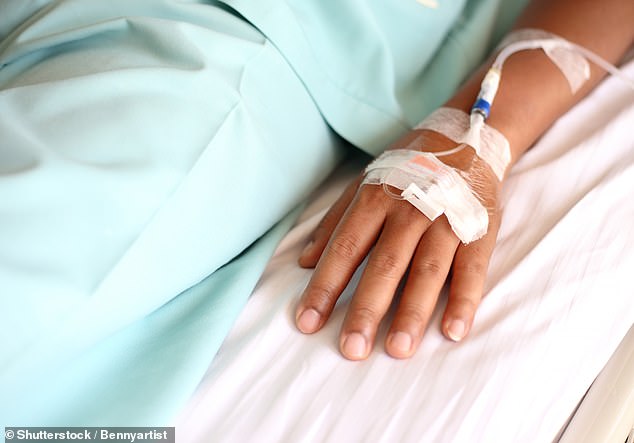It is believed to be a unique incident in which a doctor operating on a cancer patient accidentally “transplants” cancer into himself.
A 32-year-old man from Germany had been diagnosed with a rare type of cancer and had a tumor removed from his abdomen.
During the surgery, the doctor who performed the surgery accidentally cut his hand, but he immediately disinfected the wound and bandaged it.
But five months later, the 53-year-old surgeon noticed a small lump forming where he had been injured months earlier and sought treatment.
The lump turned out to be a malignant tumor, and tests revealed it was genetically identical to the cancer that the former patient had.
Because of this, the medical team that treated him concluded that he contracted the cancer due to tumor cells entering through a cut on his hand.
The authors of the case report say this is a normal situation, as in traditional transplants the body mounts an immune response and rejects any foreign tissue, and said doctors would have expected it to be the same. Ta.
However, considering the development and growth of the tumor, it suggests that the surgeon’s body had an “ineffective anti-tumor immune response.”
The authors of the case report said the doctor’s body likely did not have an appropriate response to the tumor cells “transplanted” from the patient’s body (stock image)
on the other hand, case It was first reported in 1996, but has resurfaced with renewed interest.
Writing in the New England Journal of Medicine, doctors detailed the “accidental implantation” of a patient’s malignant fibrous histiocytoma. This cancer is a rare type of cancer that forms in soft tissues with only 1,400 diagnoses per year.
The doctor injured the palm of his left hand while attempting to place a drain in the patient while performing surgery to remove cancer from the patient’s abdomen.
The wound was immediately disinfected and bandaged.
The cancer patient’s first surgery was successful, but he died from complications after the surgery.
Five months later, a 1.2-inch, hard, “tumor-like swelling” appeared at the base of the middle finger of the doctor’s left hand, and the doctor visited a hand specialist.
“Extensive” testing was performed, including numerous lab and blood tests, but no abnormal findings were found.
The tumor was removed anyway, and microscopic examination of the mass revealed that it was also a malignant fibrous histiocytoma.
A doctor who was treating both the cancer patient and the surgeon “raised the question of whether the tumors were related.”
Samples from both tumors were further analyzed and determined to be “identical.”
Both had the same types of cells and the arrangement of those cells. This means that the surgeon may have unknowingly transferred the patient’s cancer cells to a wound on his hand, allowing the disease to take root and multiply within the body.
The authors write: “Typically, the transplantation of allogeneic tissue from one person to another elicits an immune response that leads to rejection of the transplanted tissue.”
“In this surgeon’s case, an intense inflammatory response occurred in the tissue surrounding the tumor, but the tumor burden was increasing, suggesting that the anti-tumor immune response was ineffective.”
The authors speculated that the tumor “escaped immunological destruction through several mechanisms,” including molecular changes within the cells and the inability of surgeons to effectively recognize and attack tumor cells in their bodies. are.
Two years after surgeons removed his tumor, there was no sign that the cancer had spread or returned.


In a recent study, researchers detail instances in which heart transplant recipients adopted donor preferences and memories.


Above are results from analysis of the patient’s tumor (left) and the surgeon’s tumor (right). They revealed the two men had the ‘identical’ tumor
Doctors noted that the case is interesting because the transplanted tissue is different from host tissue and is targeted by the host’s immune system, which normally tries to destroy it.
For this reason, organ transplant recipients must take immunosuppressants to prevent their bodies from rejecting the transplanted organ.
However, the surgeon created inflammation around the original wound, and the immune response was unable to stop the tumor from growing.
Cases like the surgeon’s are extremely rare, and there are no statistics on “transplanted” cancers.
2013 review Of these cases published in Cold Spring Harbor Perspectives in Medicine, there is no estimate of the risk of cancer transmission from donor to recipient, and the authors say there is limited data on the subject.
“The incidence of cancer transmission is so low that sporadic case reports are the main source of information,” the report’s authors wrote.
earlier review Studies since 1993 that looked at data from the 1970s also found that there were only “sporadic” reports of cancer being transmitted through organ donation.
The 2013 review added: “The infrequency of cancer and the highly variable stages make a definitive risk calculation impossible.”
However, the authors continued, this data “very likely underestimates the true incidence.”
Using the limited data available, the authors of the 2013 report concluded that cancers known to have been transmitted from donor to recipient at least once include breast cancer, colon cancer, They discovered that he had liver cancer, lung cancer, melanoma, ovarian cancer, prostate cancer, and kidney cancer. cancer.

